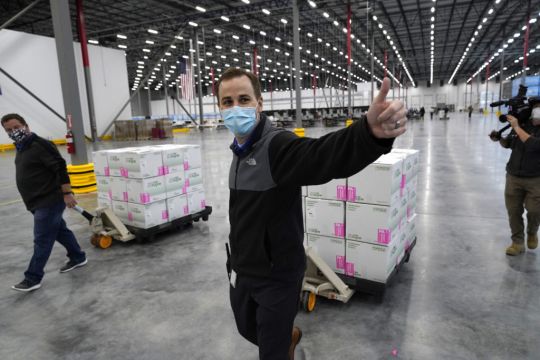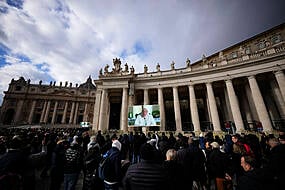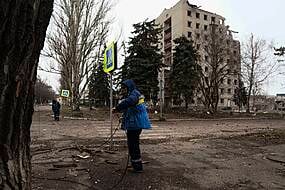Workers in the US began packaging shipments of the second Covid-19 vaccine to be authorised in the country in a boost to efforts to bring the coronavirus pandemic under control.
Employees at a factory in the Memphis area were boxing up the vaccine developed by Moderna and the National Institutes of Health.
The jabs are expected to be administered from Monday, just three days after the Food and Drug Administration authorised their emergency rollout.

Later on Sunday, an expert committee will debate who should be next in line for early doses of the Moderna vaccine and a similar one from Pfizer and Germany’s BioNTech.
Pfizer’s shots were first shipped out a week ago and started being used the next day, kicking off the nation’s biggest vaccination drive.
Public health experts say the vaccine — and others in the pipeline — are the only way to stop the virus spreading.
Nationwide, more than 219,000 people per day on average test positive for the virus, which has killed more than 314,000 in the US and nearly 1.7 million worldwide.
The Pfizer and Moderna shots shipped so far and going out over the next few weeks are nearly all going to healthcare workers and residents of long-term care homes, based on the advice of the Advisory Committee on Immunisation Practices.
That panel meets on Sunday to debate who should get the doses available after those early jabs are administered.

There will not be enough shots for the general population until spring, so doses will be rationed at least for the next several months.
The panel members are leaning towards putting “essential workers” next in line, because people like bus drivers, grocery store clerks and others are the ones getting infected most often.
But other experts say people aged 65 and older should be next, along with people with certain medical conditions, because those are the Americans who are dying at the highest rates.
The expert panel’s advice is almost always endorsed by the US Centres for Disease Control and Prevention (CDC).
But no matter what the CDC says, there will be differences from state to state, because their health departments have different ideas about who should be closer to the front of the line.
Both the new Moderna vaccine and the Pfizer-BioNTech shot require two doses several weeks apart. The second dose must be from the same company as the first. Both vaccines appear safe and strongly protective in large, still unfinished studies.

Meanwhile, president-elect Joe Biden’s nominee for US surgeon general said it was more realistic to think it may be mid-summer or early autumn before coronavirus vaccines were available to the general population in the United States, rather than late spring.
Speaking on Sunday on NBC’s Meet The Press, Vivek Murthy said Mr Biden’s team was working towards having coronavirus vaccines available to lower-risk individuals by late spring but that doing so required “everything to go exactly on schedule”.
“I think it’s more realistic to assume that it may be closer to mid-summer or early fall when this vaccine makes its way to the general population,” Mr Murthy said.
Mr Murthy, who also served as surgeon general in the Obama administration, said Mr Biden’s promise of 100 million vaccines during his first 100 days in office was realistic and that the Biden team had seen more co-operation from Trump administration officials.
Elsewhere, Donald Trump’s surgeon general was defending the president not receiving a coronavirus vaccine, saying there were medical reasons for it.
US surgeon general and vice admiral Jerome Adams, speaking on CBS’ Face The Nation on Sunday, noted that Mr Trump both contracted Covid-19 in October and was treated with monoclonal antibodies.
“And that is actually one scenario where we tell people maybe you should hold off on getting the vaccine, talk to your health provider to find out the right time,” Mr Adams said.
Asked about Mr Trump doing a public-service announcement for the vaccine to encourage his supporters to get it, Mr Adams noted that both he and vice president Mike Pence had received the vaccination.







